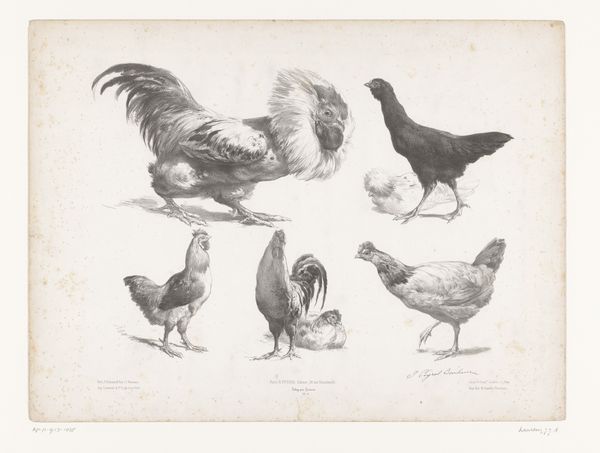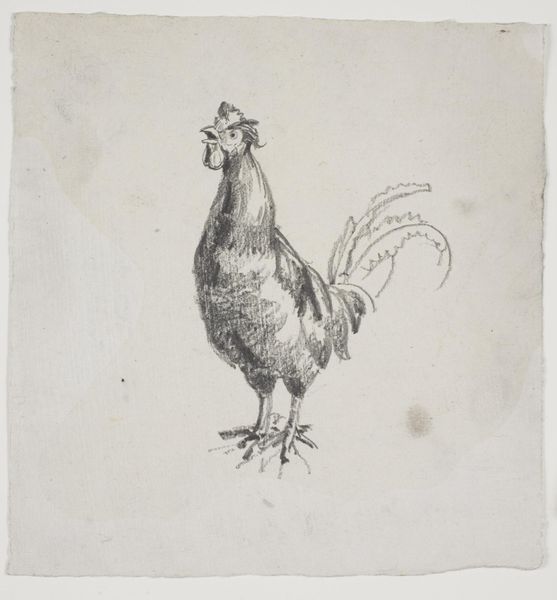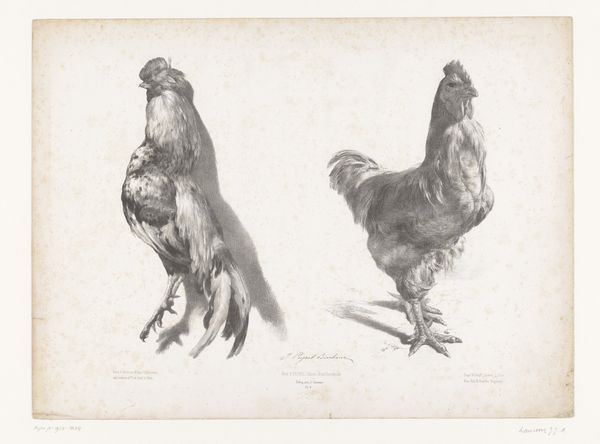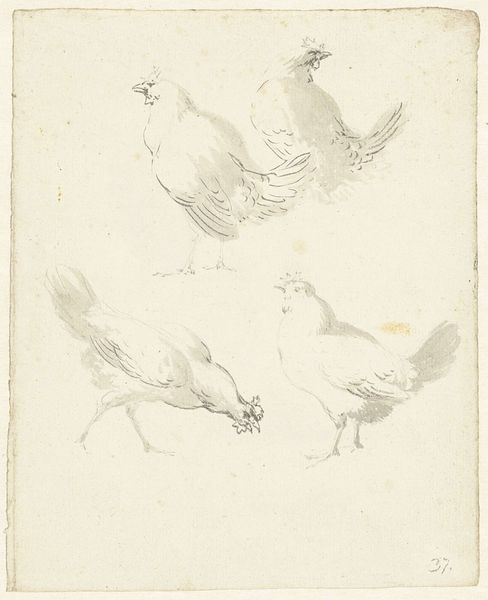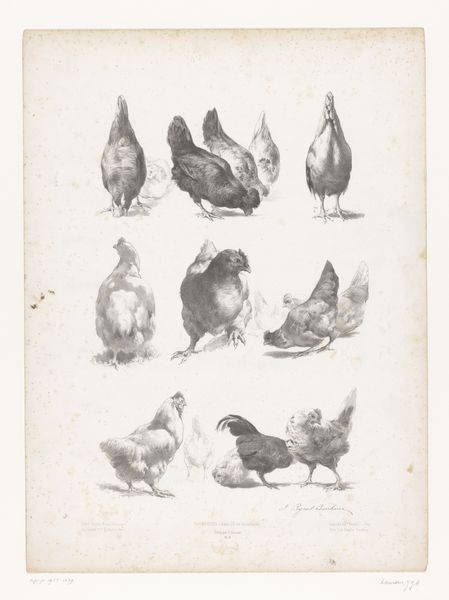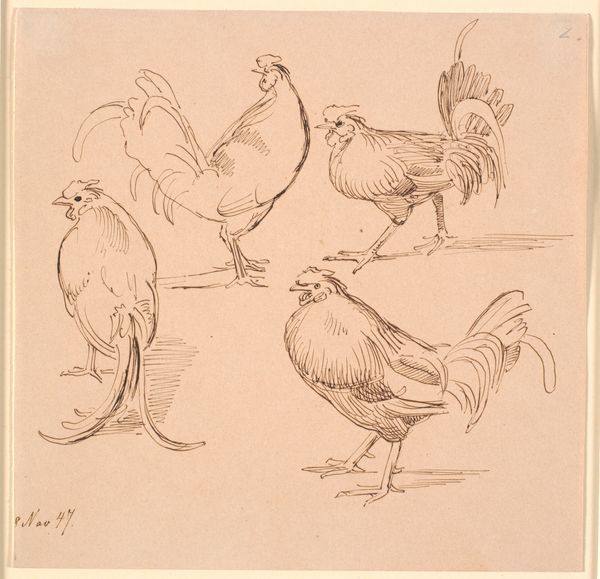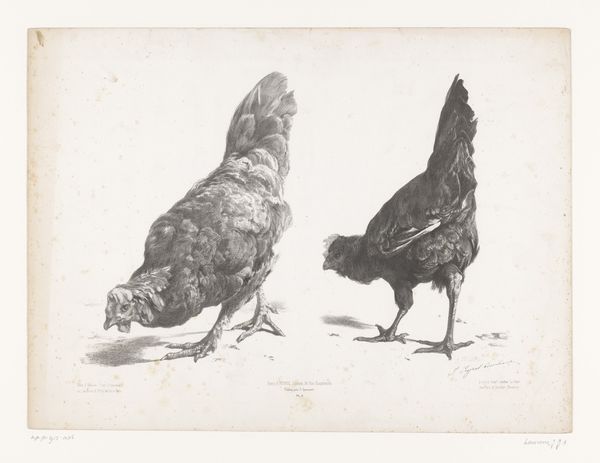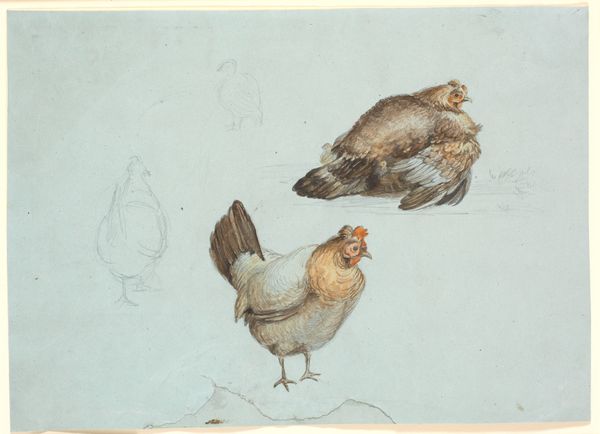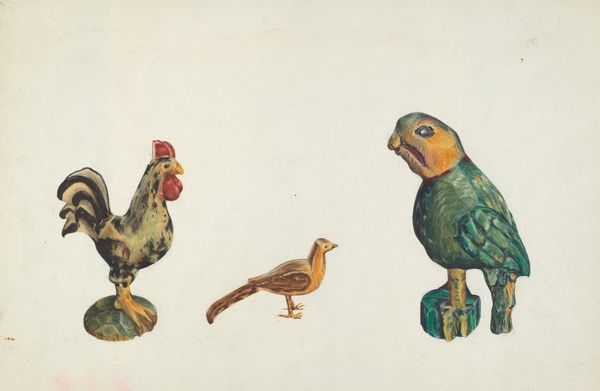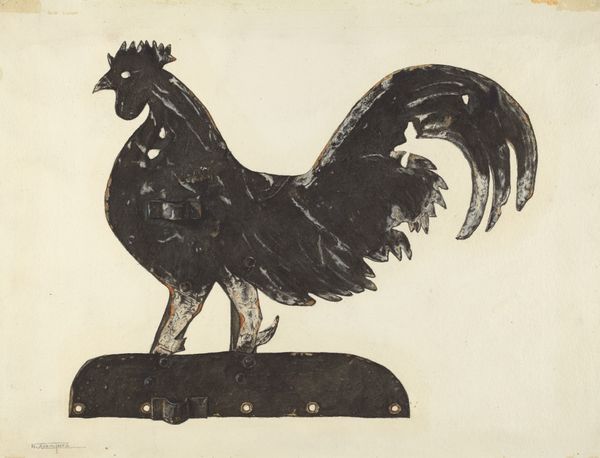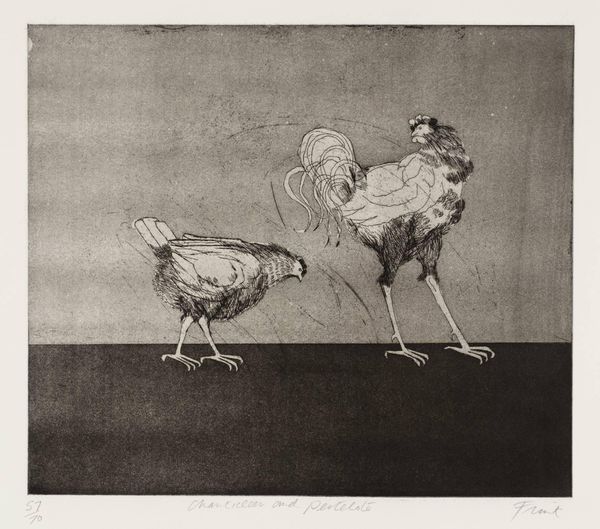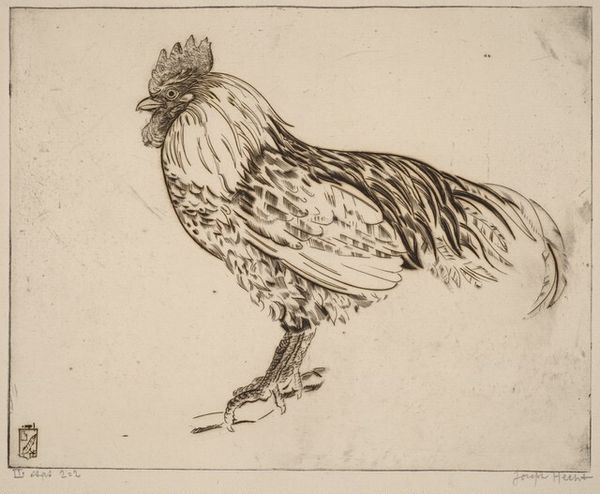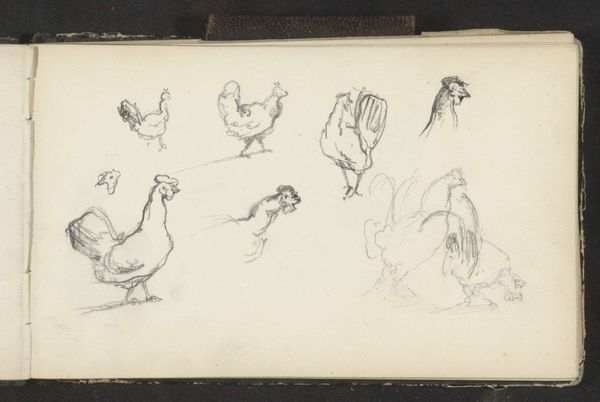
drawing, paper, pencil
#
drawing
#
pencil sketch
#
figuration
#
paper
#
pencil
#
realism
Dimensions: 215 mm (height) x 224 mm (width) (bladmaal)
Editor: This is "Høns," or "Hens," a pencil drawing on paper by Carl Bloch, dating from 1882. It's a sketch, almost like a study of chickens in different poses. I’m struck by how simple it is, but it feels so carefully observed. What do you see in this piece? Curator: These chickens... They resonate with archetypal domesticity, wouldn’t you say? The hen as nurturer, provider. Bloch isn't just capturing their physical forms; he's tapping into centuries of cultural memory where the hen embodies sustenance and simplicity. Notice how each pose is distinct. Do you think this shows just the anatomy of chickens, or maybe more? Editor: I think it might be more than just the anatomy of a chicken. I can see your point about them being domestic. Each one is really brought to life! How interesting to apply the concept of archetypes to...poultry! Curator: Absolutely! It’s fascinating how seemingly mundane subjects can carry deep symbolic weight. Look at the shading – Bloch uses it not just for volume but also to imbue the birds with a certain presence, even dignity. They’re not simply farm animals; they are stand-ins for simpler life and times. There is, here, what you might consider a moment suspended, ready to emerge. Editor: So, looking beyond just what's depicted and into the 'why' it's depicted? Like how chickens as domestic symbols have permeated our visual culture through history, then Bloch adds to that conversation? Curator: Precisely! It is this continuity of symbols which adds layers of meaning and interpretation that spans generations, even into the present moment. What has the eye learned from its observations? We, in turn, also learn as the work, again and again, speaks to us. Editor: I never thought I could spend so much time considering chickens. I'm struck by the ways art can reveal so much about what humans consider meaningful. Thanks! Curator: Indeed. Art allows for the discovery of ourselves in the symbols all around us. It’s an act of recognition and an active mode for the development of thought.
Comments
No comments
Be the first to comment and join the conversation on the ultimate creative platform.
